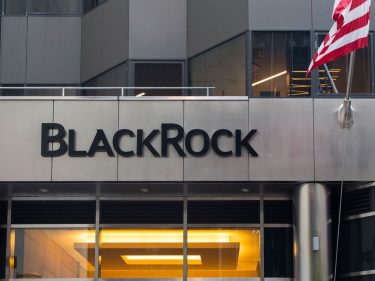Movement Labs, a blockchain company that aims to bring Facebook’s Move Virtual Machine to Ethereum, has secured $38 million in a Series A financing round led by Polychain Capital.
The firm was founded by Rushi Manche, 21, and Cooper Scanlon, 24 – Vanderbilt college dropouts who say they are on a mission to “make blockchain security sexy” with the launch of Movement L2, their new layer-2 Ethereum blockchain based on the Move programming paradigm.
Manche said he got interested in Move after reading an article a few years ago, when he was still in college, about Facebook’s efforts in the blockchain space.
“Security has never been a priority for the industry,” Manche said in an interview. “It’s always, like, ‘$100 million hack,’ ‘$20 million attack’ – we’re so succumbed and numb to the attack issue when in reality, that’s a huge issue for retail.”
Move is today best known for its association with Aptos and Sui, layer-1 blockchains with a focus on low fees and high throughput. By extending the tech to an Ethereum layer-2 – a blockchain that writes data to Ethereum but offers faster and cheaper transactions – the Movement team hopes to achieve greater security and transaction speeds than layer-2 incumbents.
Movement’s funding round saw participation from venture capital firms including Hack VC, Placeholder, Archetype, Maven 11, Robot Ventures, Figment Capital, Nomad Capital, Bankless Ventures, OKX Ventures, dao5, and Aptos Labs – the company behind Aptos.
“Between 2022 and 2023, hackers exploited smart contracts for over $5.4 billion, affecting major protocols like Curve and KyberSwap through common reentrancy attacks,” Movement explained in a statement. “Movement’s EVM allows Move and Solidity developers to deploy code that is fully verified at runtime, preventing attack vectors like reentrancy from executing.”
“With embedded firmware application runtime, we can stop 90% of attack vectors or more,” Manche told CoinDesk. Move also uses parallelization – a method for processing multiple streams of activity at once that’s used by Solana and Move-based chains to achieve greater transaction throughput. “This combination of speed and security makes for a really powerful VM,” said Manche.
Move is the stand-out product of Meta’s ill-fated foray into blockchain technology. Then still called Facebook, the company made a big splash in 2019 with the announcement that it was launching a cryptocurrency called “Libra” (later renamed “Diem”). Diem’s blockchain was supposed to use Move, a new open-source programming language based on Rust that Meta designed to make the entire process of coding up a blockchain more secure and efficient.
“In August 2022, I was in college with my co-founder at Vanderbilt and I read this article, ‘Facebook is building a new programming language,'” recalled Manche. “I would use Cosmos and the [Ethereum Virtual Machine], but there weren’t a lot of users – wasn’t a lot of volume.”
“To me, it was like, okay, Facebook, the biggest consumer app, they’re all trying to get on-chain. They’re doing this new initiative, new language, new VM. So I started digging,” said Manche.
Though Meta’s virtual currency plans were ultimately scrapped under regulatory pressure, some of the company’s employees jumped ship to found the Move-based blockchain companies Aptos and Sui.
Before discovering Move, Manche says he experimented with crypto in college, mostly in the Cosmos blockchain ecosystem. Cooper was the first of the pair to build using Move – creating a yield aggregator for Aptos.
Barely old enough to drink, Manche says he and his co-founder’s ages were initially a big quesion for investors as the pair were navigating the fundraising circuit. “When we were first starting off, it was like, ‘Who are these kids? What are they doing? How can we trust them?,'” said Manche.
“I think over time, especially me and Cooper, we’ve built a lot of trust up because we’re category leaders. We showed a lot of traction in terms of development, traction in terms of the community ecosystem,” said Manche. “The age question was always a sticking point, but I think now everyone’s pretty bullish.”
Aptos and Sui were the first to put Move to the test in the real world, and Movement Labs is the first to bring Meta’s Move tech to a layer-2 network on Ethereum. The network will support programs developed using Move or Solidity, Ethereum’s native programming language.
In addition to the Movement L2, the company is introducing the Move Stack – a blockchain execution environment that can be used to build other chains and has been designed for compatibility with popular blockchain-building frameworks such as the OP Stack and Arbitrum Orbit. It’s also building a shared sequencer, meaning the method it uses to communicate between the L1 and L2 chains will have elements of decentralization.
Movement L2 will be “one of the first main flagship L2s prioritizing decentralization and decentralized sequencers” from the start, said Manche.
The Movement L2 will enter its testnet phase this summer.




